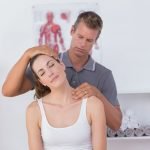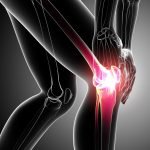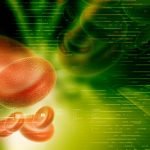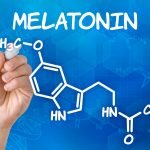Lavender Oils Trigger Estrogen Regulated Genes
Jacob Schor, ND
“Lavender makes for girly boys.”
That’s how the governor of California might sum up the recent news. This June, Clifford Bloch, a pediatric endocrinologist here in Denver, reported that young boys grew breasts after using lavender shampoo.
Gynecomastia, the medical term for enlarged male breasts, is usually the result of an imbalance between estrogens and testosterone. The condition is very rare before puberty, rare enough that Bloch realized something was wrong when a dozen preteen boys with gynecomastia showed up in his practice. Testing showed their sex hormones were at normal levels. Bloch interviewed the boys and their parents carefully and found that they were all using a shampoo, hair gel or other topical product that contained lavender.
The gynecomastia got better when the boys stopped using the lavender-containing products. Bloch took this a step further. He contacted Derek Henley and Kenneth Korach of the National Institute of Environmental Health Sciences in Research Triangle Park, N.C. These two investigators set up an experiment in their lab and exposed human breast cells to lavender. They found that the oil turned on estrogen-regulated genes and inhibited an androgen-regulated gene (Harder, 2006).
New Thoughts About Lavender
There is every reason to assume these oils have a similar but unnoticed effect in young girls. It would just be harder to detect. Earlier age of sexual development has been blamed on many environmental factors, such as eating too much tofu and chicken or the phthalates in plastics. Lavender exposure is another cause we should now consider.
Other interesting lavender research has come out this year. Lavender appears useful for treating depression and insomnia in college-age women (Lee and Lee, 2006). It also changes autonomic nervous function, lowering blood pressure, at least in rats (Tanida et al., 2006); increases appetite; slows the breakdown of fat and stimulates weight gain (Tanida et al., 2006); and acts as an effective antiparasitic, killing Giardia and Trichomonas (Moon et al., 2006). A study from 2005 confirmed the long-time use of lavender as an antifungal (D’Auria et al., 2006).
In our eagerness to shift away from synthetically manufactured chemicals to things more natural, we may have assumed too quickly that pharmaceutical-grade plant extracts were benign. Lavender obviously has a long history of safe use, but current extracts are strong and may cause effects unnoticed in the past. And it’s not just lavender. Highly concentrated plant extracts are added to almost all shampoos and soaps. Heck, even the shampoo I wash my dog with contains potent chamomile extracts.
As naturopathic physicians, we can trace our line of teachers back to practitioners who used only the natural elements to stimulate a healing response. Water, heat, cold and sunlight were the principal medicines. Whether a simple herbal tea might be suppressive to the vital force was soundly debated. These early practitioners would be aghast to see the many herbs we liberally use in our daily baths. Of course, they would also be dismayed that we aren’t bathing in icy mountain streams. Not everything natural is necessarily safe, and it is time that we as a profession begin to own up to this fact and spread a word of caution to the public.
Does Lavender Affect Breast Cells?
Gynecomastia is an undesirable side effect of the hormone blockade used to treat advanced prostate cancer. One wonders if lavender might have a role in treating prostate cancer. Recall that lavender is one of the sources of perillyl alcohol. Indeed, a May 2006 study concluded, “These novel properties of perillyl alcohol strongly suggest that perillyl alcohol could be highly useful for intervention of prostate cancer” (Chung et al., 2006). Although an earlier phase II human trial published in 2003 wasn’t able to demonstrate benefit (Liu et al., 2003), another 2003 study called it a “promising new agent” that could be used to “radio-sensitize prostate cancer cells” (Rajesh and Howard, 2003). While it seems unlikely that the lavender used in a shampoo provides enough perillyl alcohol to make a difference, it is still worth considering.
Probably the most serious question is whether lavender affects breast cancer cells, especially the estrogen receptor positive ones. Because lavender oil massages are sometimes suggested for treating lymphedema caused by breast cancer surgery, this inquiry seems particularly important.
Regardless of whether lavender has a role to play in cancer treatment, it is obvious that it has little use in products used on a routine basis by healthy people and especially children. Double-check those shampoo bottles at your earliest opportunity.
References
Chung BH et al: Perillyl alcohol inhibits the expression and function of the androgen receptor in human prostate cancer cells, Cancer Lett 236(2):222-228, 2006.
D’Auria FD et al: Antifungal activity of Lavandula angustifolia essential oil against Candida albicans yeast and mycelial form, Med Mycol 43(5):391-396, 2005.
Harder B: Lavender revolution: plant essences linked to enlarged breasts in boys, Science News Online 170(1), 2006.
Lee IS, Lee GJ: Effects of lavender aromatherapy on insomnia and depression in women college students, Taehan Kanho Hakhoe Chi 36(1):136-143, 2006.
Liu G et al: Phase II trial of perillyl alcohol (NSC 641066) administered daily in patients with metastatic androgen independent prostate cancer, Invest New Drugs 21(3):367-372, 2003.
Moon T et al: Antiparasitic activity of two Lavandula essential oils against Giardia duodenalis, Trichomonas vaginalis and Hexamita inflata, Parasitol Res June 2, 2006.
Rajesh D, Howard SP: Perillyl alcohol mediated radiosensitization via augmentation of the Fas pathway in prostate cancer cells, Prostate 57(1):14-23, 2003.
Tanida M et al: Olfactory stimulation with scent of lavender oil affects autonomic neurotransmission and blood pressure in rats, Neurosci Lett 398(1-2):155-160, 2006.
 Jacob Schor, ND is a 1991 graduate of the National College of Naturopathic Medicine and has practiced in Denver for the past 14 years. He served as president of the Colorado Association of Naturopathic Physicians (CANP) from 1992 to 2000, and continues to serve as legislative chair for the organization. He is in practice with his wife, Rena Bloom, ND, current CANP president, at the Denver Naturopathic Clinic.
Jacob Schor, ND is a 1991 graduate of the National College of Naturopathic Medicine and has practiced in Denver for the past 14 years. He served as president of the Colorado Association of Naturopathic Physicians (CANP) from 1992 to 2000, and continues to serve as legislative chair for the organization. He is in practice with his wife, Rena Bloom, ND, current CANP president, at the Denver Naturopathic Clinic.









